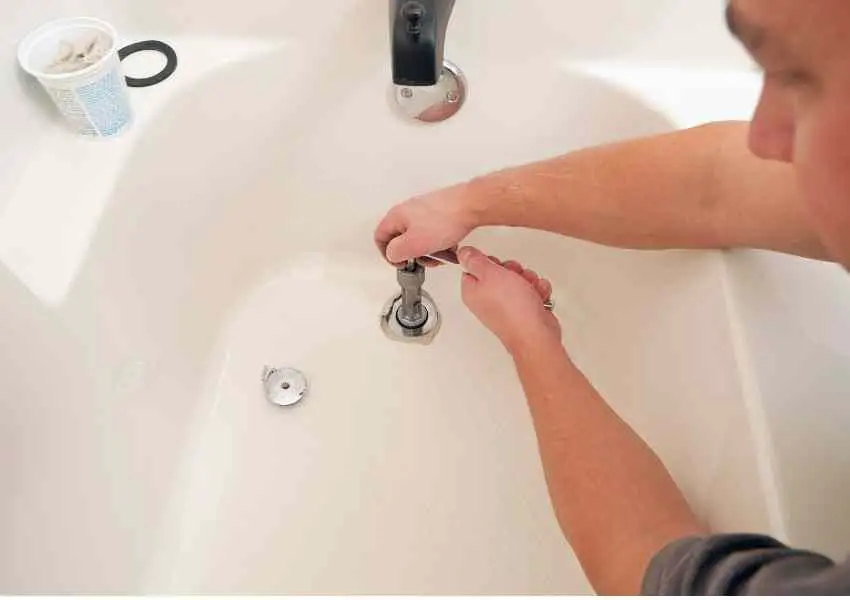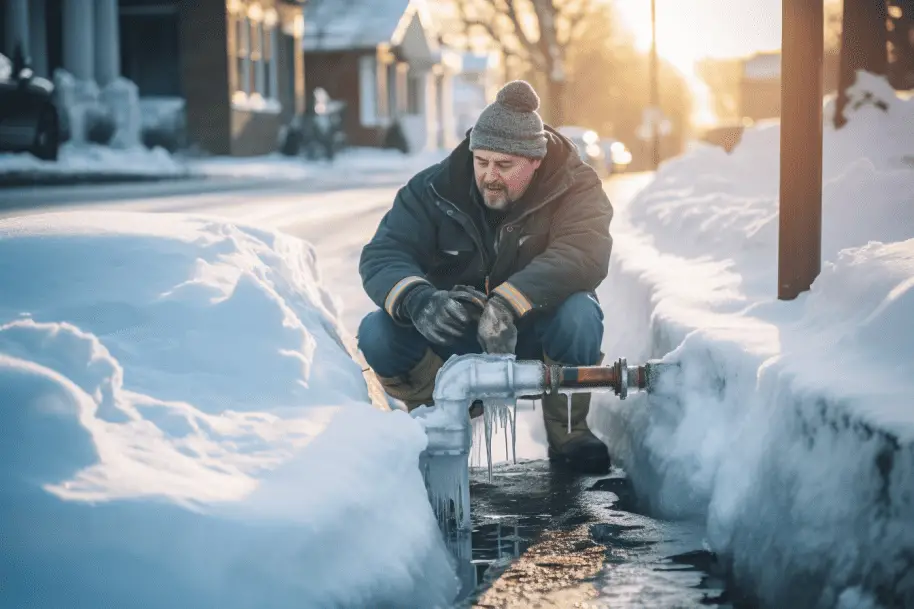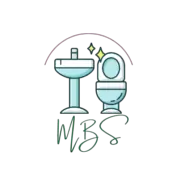Yes, a bathtub drain can freeze, especially in colder climates or when the bathroom and plumbing fixtures are exposed to frigid temperatures.
Bathtub drain freezing is an inconvenience and can cause potential water damage to your home.
In this blog post, we will discuss the factors contributing to frozen bathtub drains, how to identify one, and preventative measures to avoid this issue.
We will also cover thawing methods and precautions if faced with a frozen drain, troubleshooting for other bathtub drain issues, and year-round maintenance to keep your drain functioning at its best.
Finally, we will address protecting your bathroom from water damage that can result from frozen drains. Equip yourself with this invaluable knowledge to keep your bathroom in optimal condition, no matter the season.

Understanding the Factors that Contribute to Frozen Bathtub Drains
Several factors can contribute to a bathtub drain freezing. Being aware of these factors can help you prevent this undesirable situation:
- Outside Temperature: Extremely cold temperatures can cause the water inside your drainpipes to freeze, eventually leading to a blockage.
- Insufficient Insulation: When your pipes and drains aren’t adequately insulated, they’re more susceptible to freezing.
- Placement of Pipes and Drains: Plumbing running through exterior walls, crawl spaces, or unheated basements increases the likelihood of freezing.
- Infrequent Use: If you don’t use your bathtub often, the standing water in the pipes can freeze more easily.
- Unheated or poorly heated bathrooms: When indoor spaces don’t maintain enough warmth, the pipes and drains can become too cold, leading to freezing.
How to Identify a Frozen Bathtub Drain

Detecting a frozen bathtub drain is essential to address the issue promptly and prevent further complications. Here are some indicators that your bathtub drain might be frozen:
- Slow or No Draining: If your bathtub takes a long time to empty or doesn’t drain at all, it might indicate a frozen drain, especially in cold weather.
- Unusual Noises: If you hear gurgling or other odd noises when the water drains, it could be due to air being forced through the ice blockage in your bathtub drain.
- Noticeably Cold Pipes: Touch the drain and the surrounding pipes. If they are significantly colder than usual, you might have a frozen drain on your hands.
- Visible Frost on Pipes or Drains: Inspect your bathroom’s visible pipes and drains. If you notice frost or ice formation, your drain is likely frozen.
- Cold Bathroom Temperatures: If the bathroom feels colder than usual or the temperature is below freezing, it increases the chance of your bathtub drain being frozen.
Once you have identified a frozen bathtub drain, it’s crucial to address the issue promptly before it leads to water damage or bursts the drainpipe. In the following points, we will discuss preventative measures, thawing techniques, and tips for maintaining your bathtub drain.
Preventing Bathtub Drains from Freezing – Insulation and Heating Solutions
Being proactive about preventing frozen bathtub drains can save you time, money, and potential damage to your home. Here are several strategies to avoid freezing:
Insulation
- Pipe Insulation: Insulate your pipes with foam, fiberglass, or polyethylene pipe insulation materials to help prevent freezing.
- Insulate Walls: Ensure your bathroom walls, especially those containing drainpipes, are adequately insulated to maintain a proper temperature.
Heating Solutions
- Keep Room Warm: Ensure your bathroom stays warm by maintaining a consistent temperature throughout your home, especially during colder months.
- Space Heaters: Consider using a bathroom-safe space heater as an additional source of warmth if the area around the tub is cold.
Preventative measures can significantly reduce the risk of your bathtub drain freezing, making your bathroom more comfortable and functional.
Thawing a Frozen Bathtub Drain – Methods and Precautions
If you find yourself dealing with a frozen bathtub drain, it’s essential to know how to thaw it safely and effectively. Here’s a table outlining different thawing methods, along with their pros and cons:
| Method | Pros | Cons | Notes |
|---|---|---|---|
| Hot Water Bottle | – Non-electric heat source – Can apply direct heat to pipes | – May require refilling for extended use | Wrap hot water bottle in a towel before applying to pipes to prevent melting or scorching |
| Hair Dryer | – Provides a steady source of heat – Easy to use and control | – Electric (potential hazard when near water) – Not suitable for tight spaces | Keep a safe distance from the water source, and start at the end closest to the faucet |
| Heat Lamp | – Can heat a larger area of pipes – Accessible for hard-to-reach places | – Electric (potential hazard when near water) – Takes longer time to thaw | Use caution with the location, and avoid contact with flammable materials or direct exposure to pipes |
| Electric Heating Tape | – Provides consistent heat – Can be wrapped around pipes | – Electric (potential hazard when near water) – More expensive | Follow manufacturer’s instructions when using heating tape and avoid overlap |
While thawing your drain, remember to exercise caution and follow safety precautions. Always monitor the process to prevent overheating or fire hazards. If you’re unsure about any method or uncomfortable handling the situation, it’s advisable to involve a professional plumber.
How to Maintain Your Bathtub Drain Year-Round
Proper maintenance of your bathtub drain is crucial to prevent issues such as freezing and clogging. Follow these tips to keep your drain in optimum condition:
- Clear Debris: Regularly remove debris like hair or soap scum from the drain to prevent clogs that can lead to slow draining.
- Regularly Use the Bathtub: Using your bathtub frequently helps keep the water flowing through the pipes and minimizes the chance of freezing.
- Install a Drain Strainer: A strainer can catch hair and other debris, preventing it from causing clogs in your drain.
- Clean Drains with Natural Methods: Periodically use a mix of baking soda and vinegar followed by hot water to clean and clear your drainpipes.
- Inspect Pipes: Check your pipes for signs of wear, corrosion, or visible damage regularly, and address any issues before they worsen.
Protecting Your Bathroom from Water Damage Due to Frozen Bathtub Drains
Taking preventive measures to avoid frozen bathtub drains can help you prevent water damage in your bathroom. However, in case you face issues with freezing, here are some recommendations to protect your bathroom:
- Turn Off the Water Supply: If you suspect a frozen drain, immediately turn off the water supply to prevent further water flow, which can lead to pipe damage or a burst.
- Monitor for Leaks: Thawing frozen drains can sometimes lead to leaks. Regularly check around the drainpipes to identify any leaks and address them promptly.
- Install a Water Alarm: Water alarms can detect moisture levels and alert you to potential leaks or flooding caused by frozen drains.
- Maintain Indoor Temperature: Keeping a consistent temperature within your home, including the bathroom, will help avoid frozen drains and their related water damage.
By following these tips and suggestions, you’ll protect your bathroom from water damage and maintain a functional and comfortable space.
Conclusion
In conclusion, being aware of the potential for a frozen bathtub drain is crucial to maintaining your bathroom’s functionality and preventing water damage. “Can a Bathtub Drain Freeze?” – Yes, it can.
You can significantly reduce the risk by understanding the factors that contribute to freezing, identifying a frozen drain, and taking proactive measures. Knowing how to thaw a frozen drain responsibly and safely can help restore your bathtub to normal use.
Implementing preventive methods, carrying out regular maintenance, and protecting your bathroom from water damage will ensure that your drains and bathroom as a whole remain in optimal condition.
Remember that addressing any issues promptly and being aware of the signs of a frozen drain can help you avoid significant damage to your home. Don’t hesitate to involve a professional plumber if you’re unsure about any aspect of the process. With this knowledge, you can confidently maintain your bathroom and enjoy a comfortable environment year-round.
